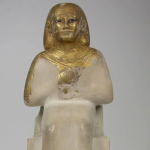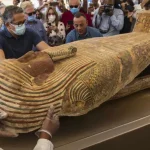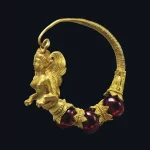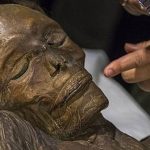An Up-close Look at a Bronze Statue of Standing Parvati from the Chola Period in Tamil Nadu, India, around 1200 CE
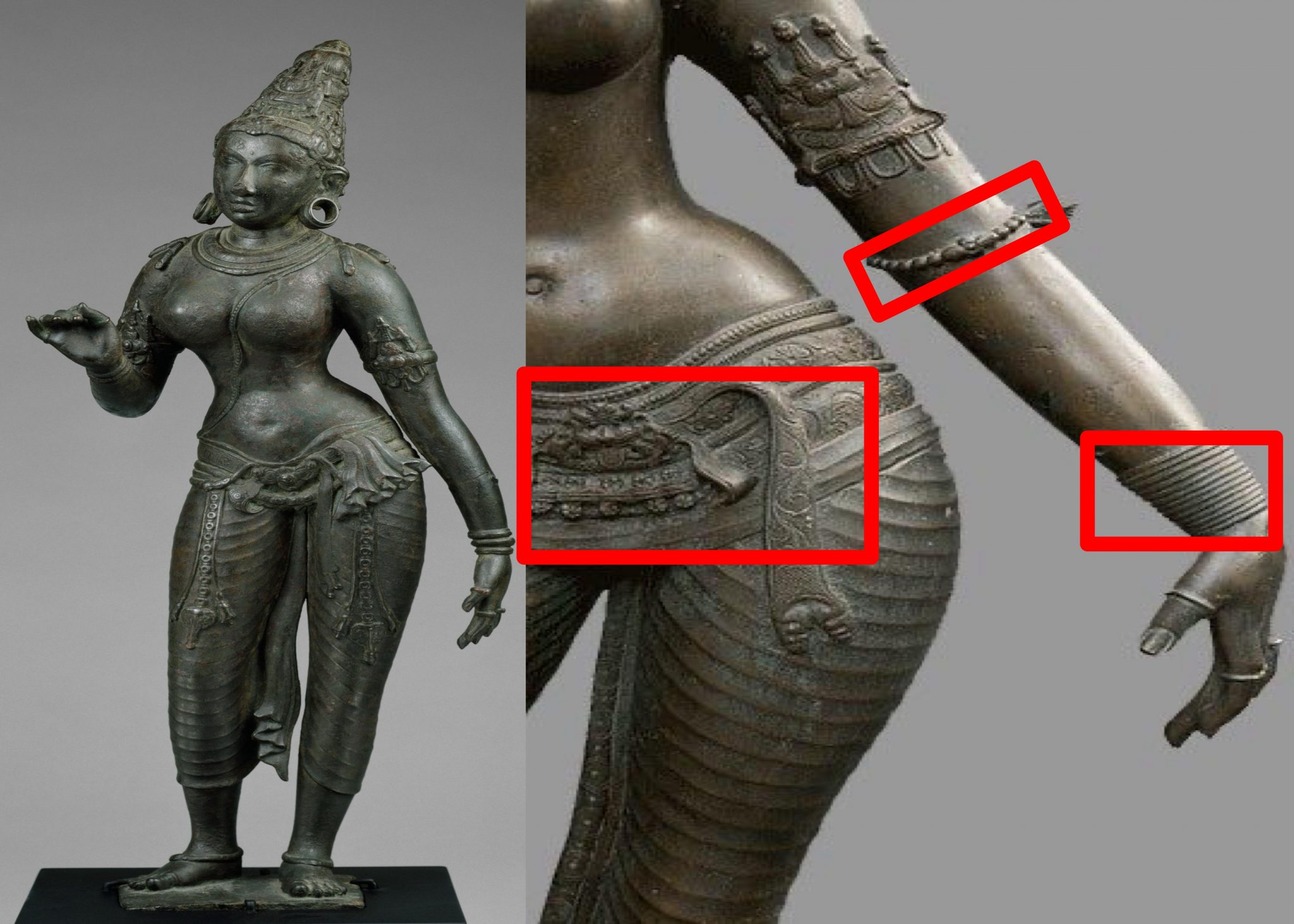
In the annals of Indian art history, the Chola period stands as a golden age of artistic and cultural achievement. Among the myriad masterpieces produced during this illustrious era, one particular artifact captivates the imagination with its exquisite beauty and intricate detailing—the bronze statue of Standing Parvati. Dating back to around 1200 CE and originating from the vibrant region of Tamil Nadu in southern India, this sculpture offers a glimpse into the rich artistic tradition and spiritual heritage of the Chola dynasty.

At first glance, the bronze statue of Standing Parvati mesmerizes with its grace and elegance. Standing tall and regal, Parvati—the Hindu goddess of fertility, love, and devotion—is depicted in a posture of serene majesty, her form exuding an aura of divine presence. But it is in the finer details that the true mastery of Chola craftsmanship is revealed.
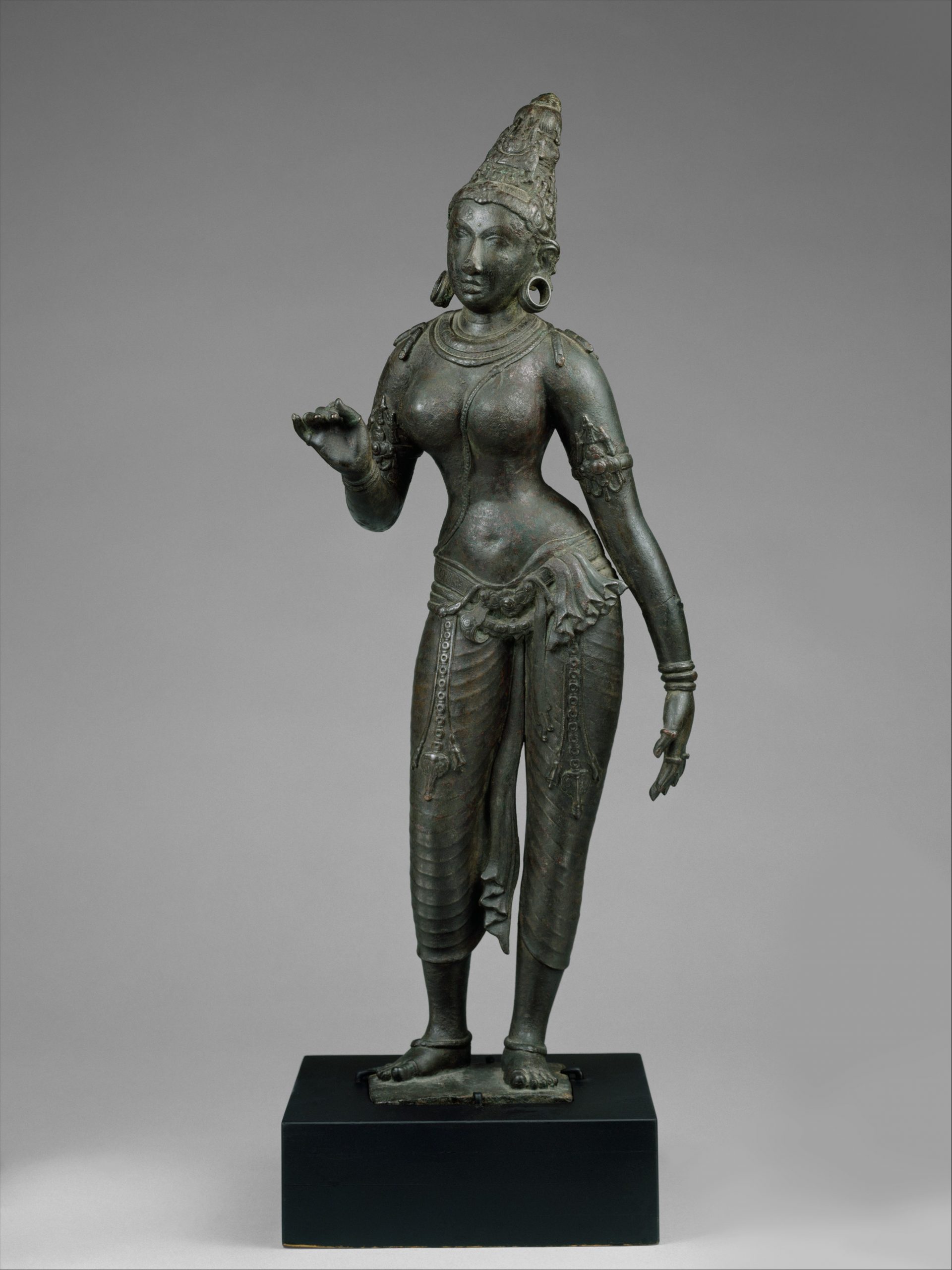
Every aspect of the statue is meticulously rendered, from the delicate features of Parvati’s face to the intricate patterns adorning her attire. Her facial expression is one of serenity and tranquility, reflecting her role as the embodiment of maternal love and compassion. The folds of her garments cascade gracefully around her body, revealing the skill of the Chola artisans in capturing the fluidity of fabric in metal.
But perhaps the most striking aspect of the statue is the symbolism woven into its design. In Hindu iconography, Parvati is often depicted as the consort of Shiva, the god of destruction and regeneration. As such, her portrayal in the Standing Parvati statue serves as a symbol of the divine union between masculine and feminine energies, representing the cosmic balance and harmony inherent in the universe.
The Chola period was a time of great religious fervor and artistic innovation in Tamil Nadu, and the bronze statue of Standing Parvati exemplifies the zenith of these achievements. It is a testament to the spiritual devotion and artistic vision of the Chola artisans, who sought to capture the essence of divine beauty in their creations.

Today, the bronze statue of Standing Parvati serves as more than just a work of art—it is a tangible link to the past, a window into the world of ancient Tamil Nadu and the vibrant culture of the Chola dynasty. As it stands in silent vigil, it reminds us of the enduring power of art to transcend time and space, connecting us to the rich tapestry of human experience across the ages.
In conclusion, the bronze statue of Standing Parvati from the Chola period is a testament to the artistic genius and spiritual depth of ancient India. Its intricate beauty and symbolic significance continue to captivate and inspire, inviting us to explore the rich cultural heritage of the Chola dynasty and the enduring legacy of Indian artistry.
